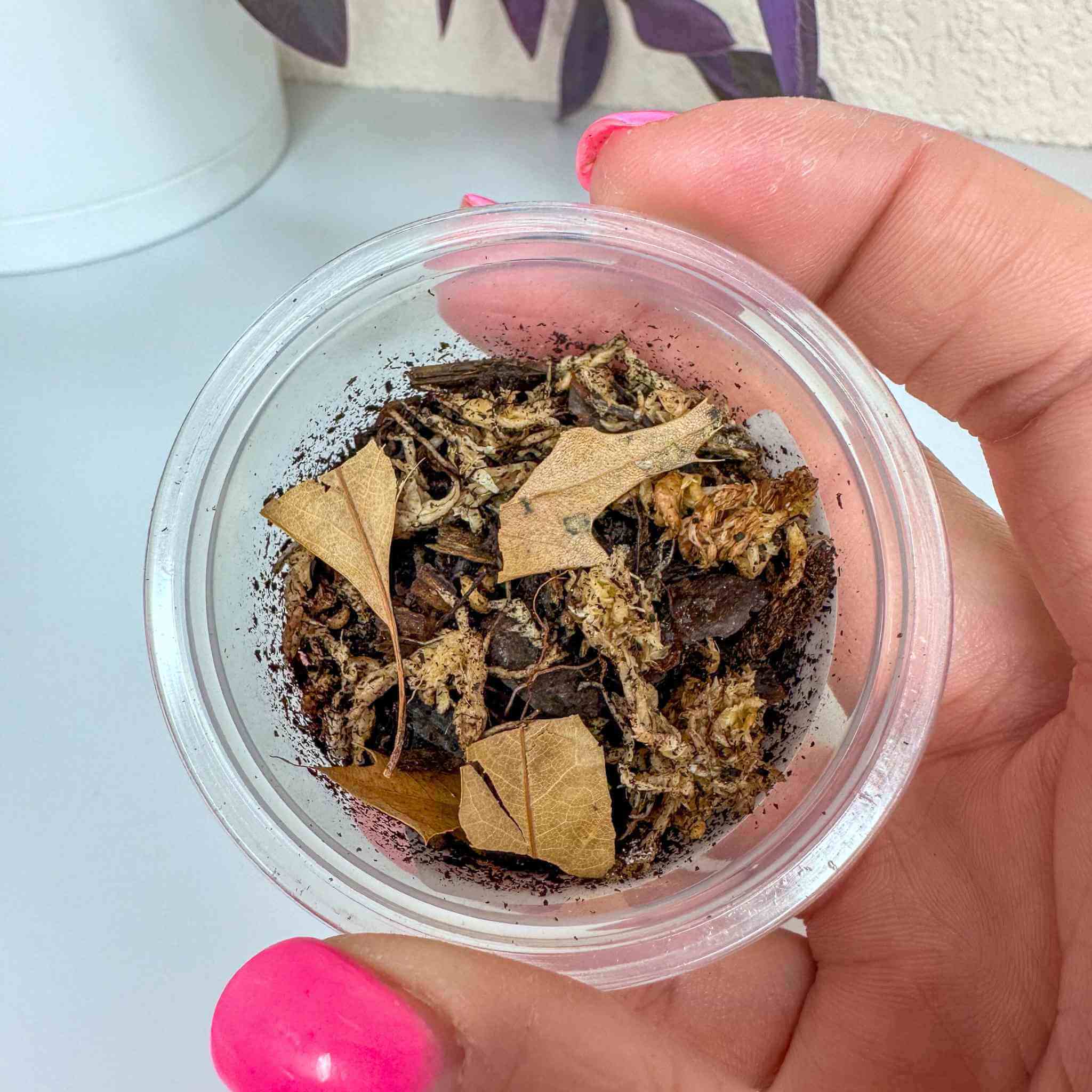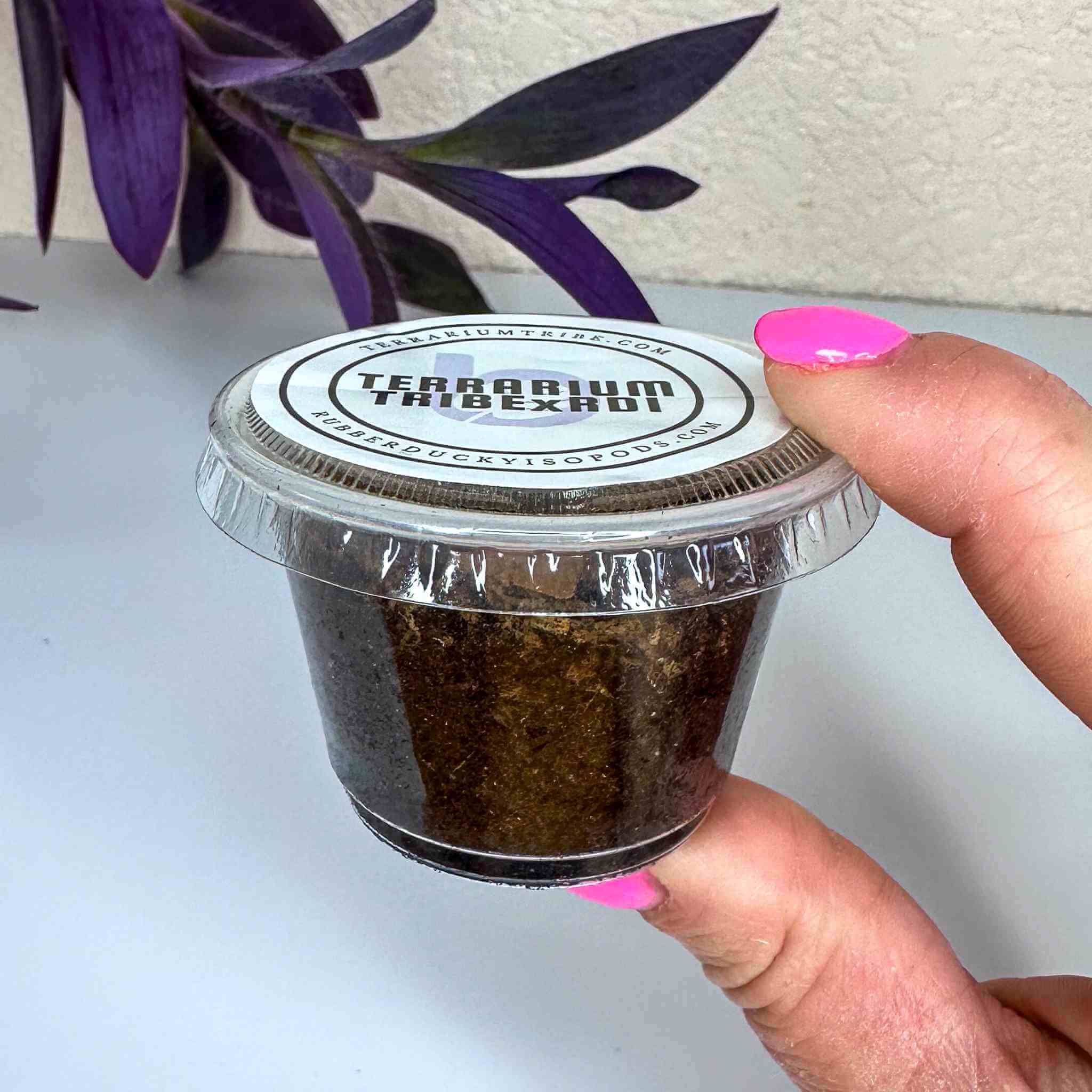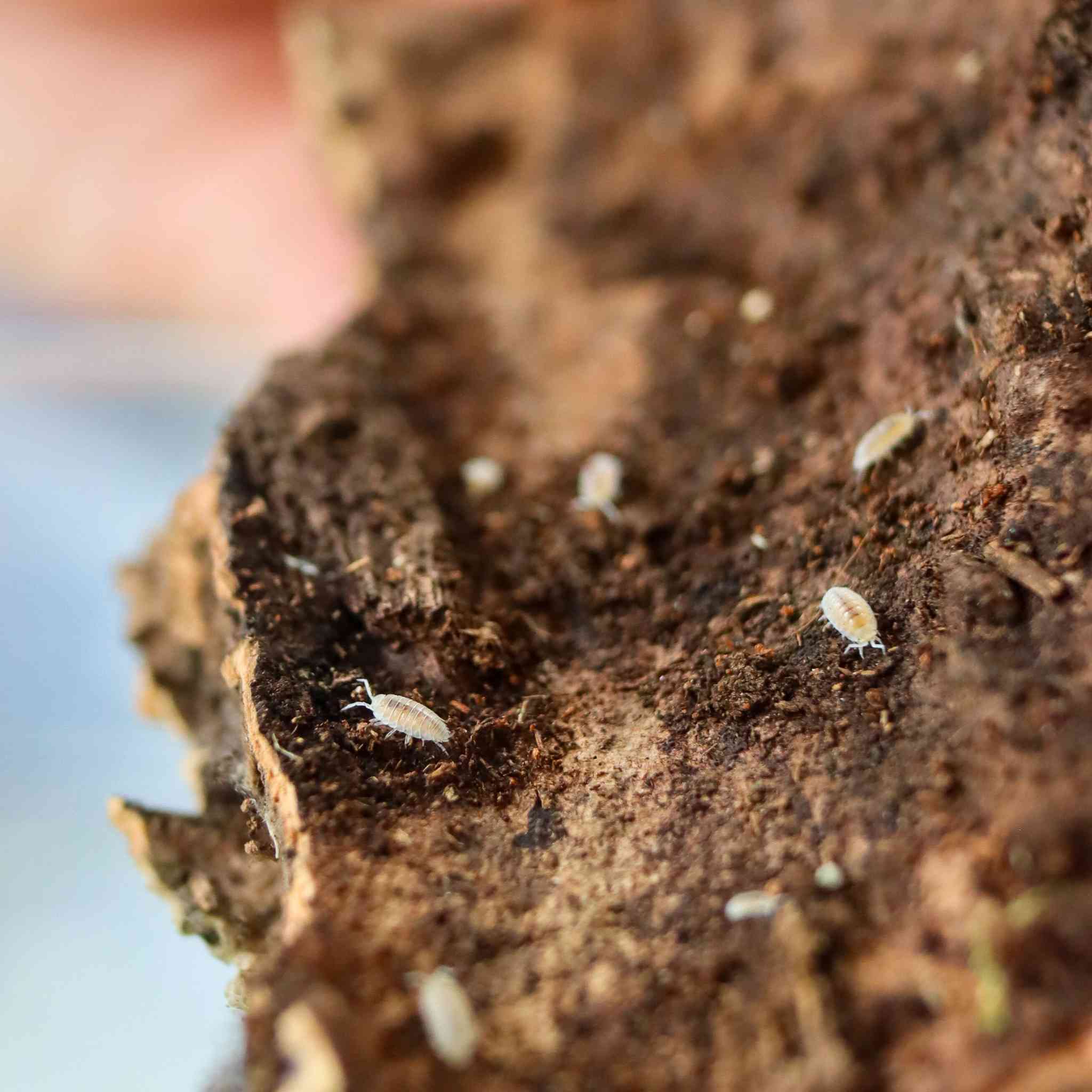
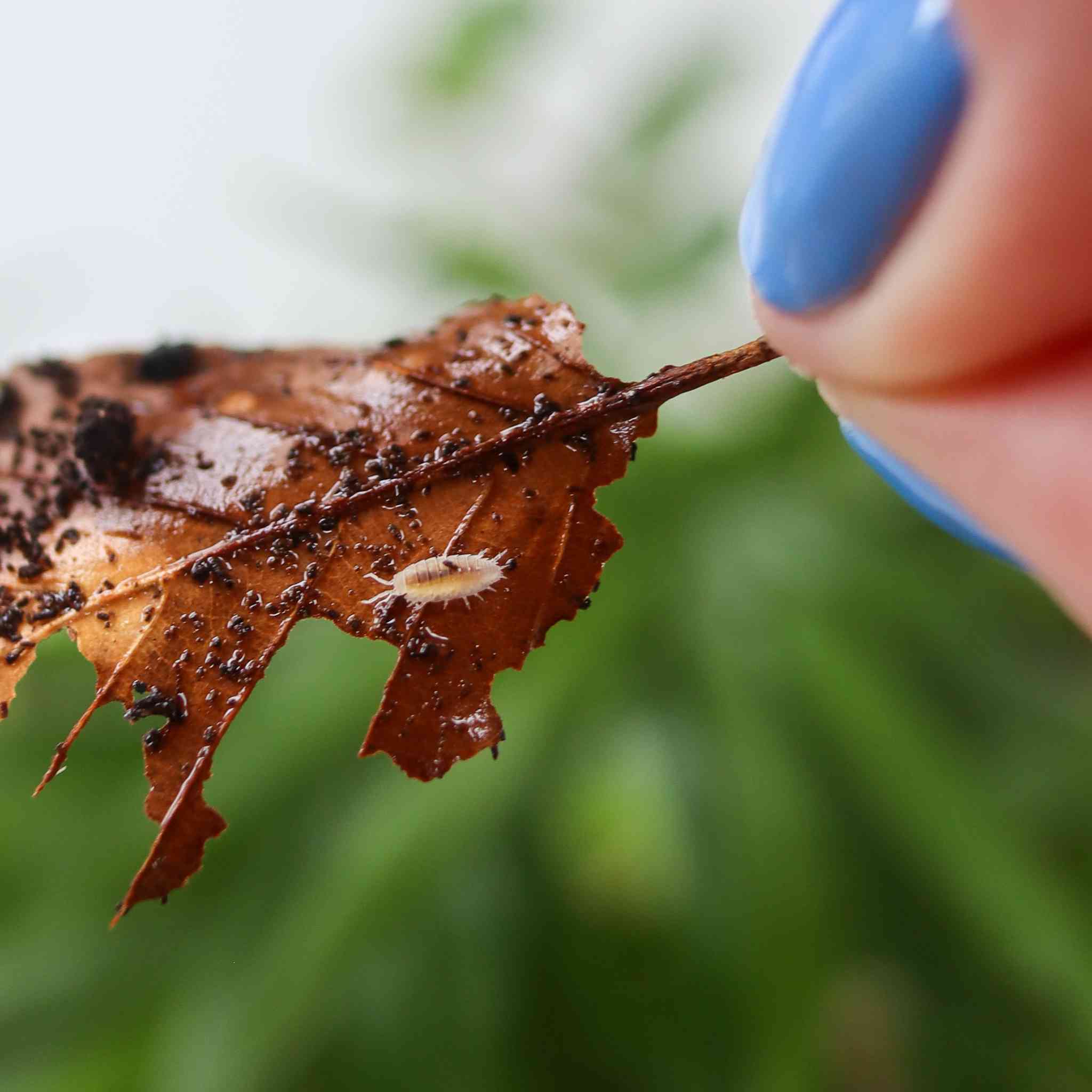
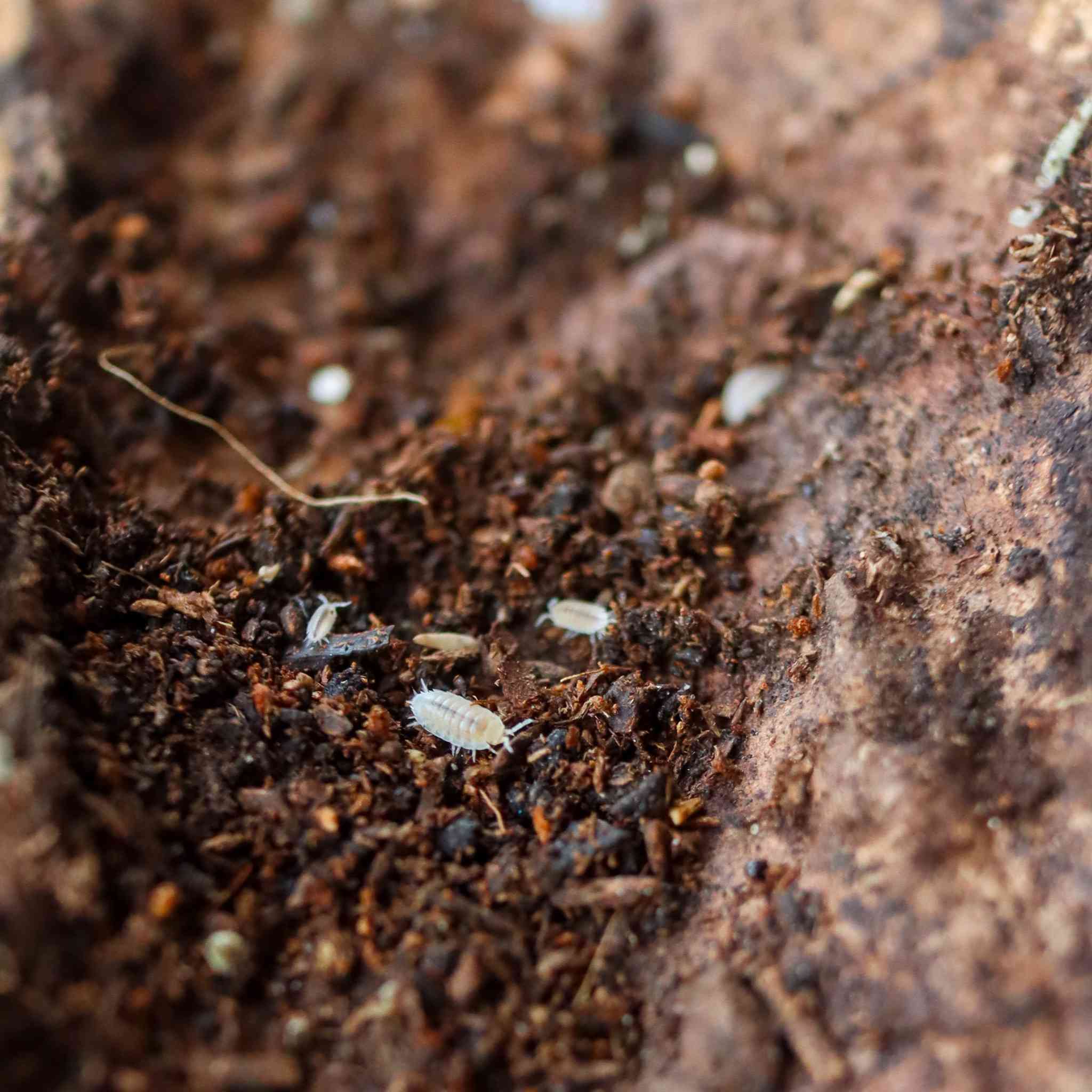
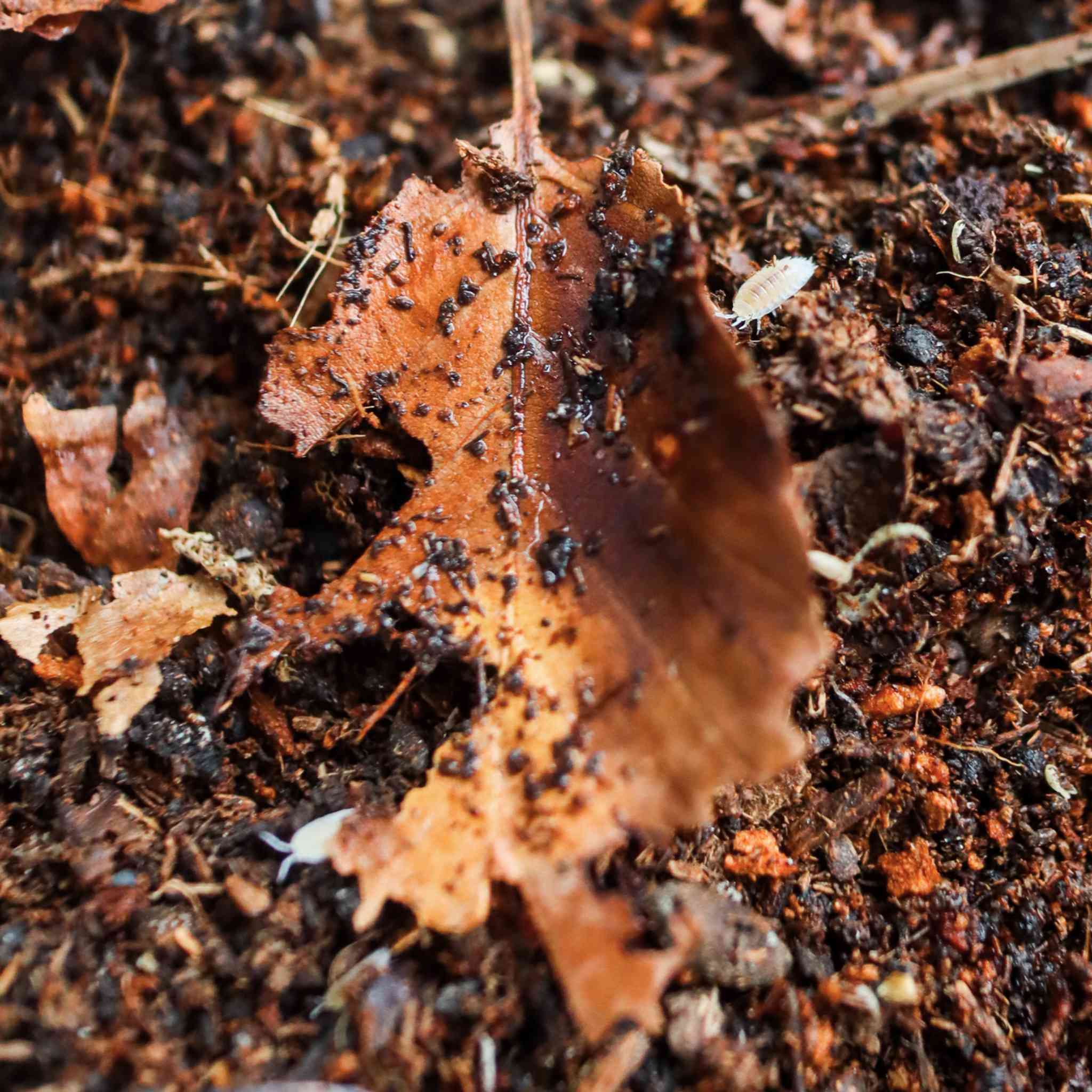
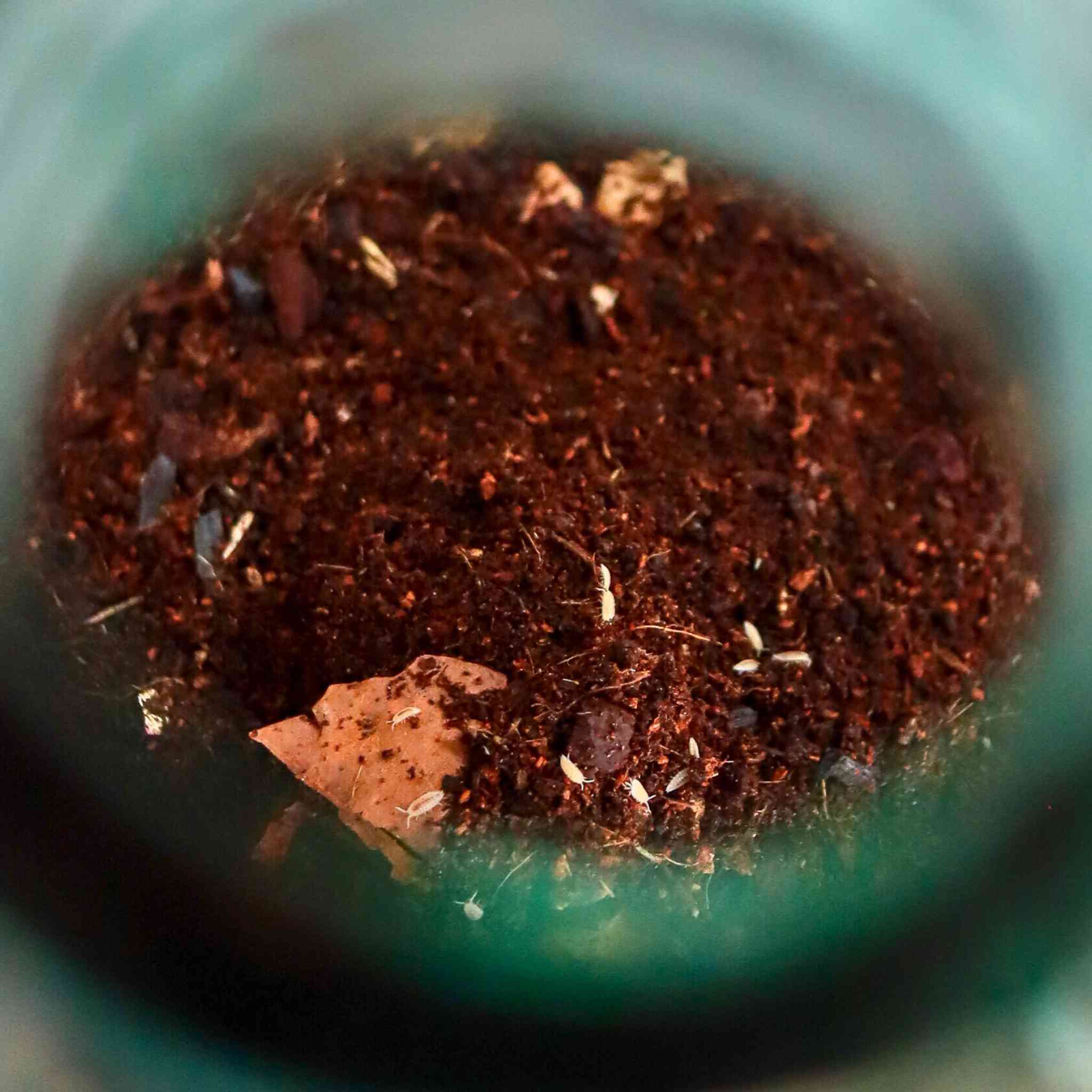
Dwarf White Isopods (Trichorhina tomentosa) 20+ Count
Despite their minute size, Dwarf White Isopods are excellent bioactive cleaners. Truly tiny and well suited to a terrarium's moist, humid conditions, these tropical isopods are the clear choice for small terrariums. Due to their burrowing nature, they also have a ton of utility in bigger bioactive terrariums when paired with surface-dwelling isopod species.
- Bioactive recyclers - Small but mighty good at cleaning.
- Unseen team - Tiny (& often burrowed) they work in the shadows.
- Aerators - These burrowing bugs keep your substrate fresh.
- Prolific - Quick and easy breeding (even without mates).
- Great feeder insect - A nutritious and self-replicating snack.
📦 We ship live goods on Mondays & Tuesdays. Check out our live arrival guarantee! (+ how to qualify).

Dwarf White Isopods
Care Specs & Uses
Tropical | Temperate
Cleanup Crew | Feeder
70-85º Fahrenheit
High
0.5cm
Very Easy
FAQ
Dwarf White Isopod questions? We've got you.
Check out the most common questions our customers ask. Have questions about something else? See our dedicated FAQ page!
How do I care for Dwarf White Isopods?
See the care specifications above and check out our full guide to Dwarf White Isopods for more nuanced care advice.
Do I need to feed my isopods?
A staple diet of leaf litter is essential, so you’ll need to provide a regular supply.
While a balanced bioactive terrarium/vivarium can be somewhat self-supporting for Dwarf White Isopods, supplementation is advised initially while the colony and ecosystem are established.
A pinch of our Superfood Powder is recommended every 4-7 days and from there whenever needed. See our full guide to isopod food for more information.
Do isopods need ventilation?
For isopods in closed terrariums we recommend looser fitting lids and regularly opening for feeding. Trichorhina tomentosa are tolerant of low ventilation and a natural fit for tropical conditions but they will still need some level of regular air exchange.
For isopod culture boxes, RDI suggests that regularly opening for watering/feeding alone may provide enough ventilation.
Alternatively, drilling holes in the plastic culture container is a popular method in the hobby (though it brings an increased risk of pests). Just be sure to cover the holes with mesh or fabric to prevent escapees with this tiny species!
Do these isopods need water/moisture?
Isopods in tropical terrariums should have no need for extra moisture top-ups beyond your typical watering schedule (as long as you’re maintaining tropical conditions).
However, isopods in culture boxes will need regular watering. How frequently you need to spray your isopod enclosure will depend on the species, the setup, and the ambient humidity in your home.
RDI recommends every 3-4 days as a loose rule of thumb (checking daily for the first week after receiving them).
These Trichorhina tomentosa isopods are a species that prefer a high-humidity setup, so they will lean towards more regular watering.
What should I do when my isopods arrive?
We recommend opening your order immediately after it arrives and checking them over. For best results, put your isopods into their new home right away; we recommend gently tipping them in along with the contents of the tub.
If that’s not possible, isopods can stay in the tub they’re in for up to a week, provided they have a leaf litter supply and you open the tub up at least every 2 days minimum for air exchange.
How many isopods do I need for a terrarium?
For most standard planted terrariums, a 20 count of these dwarf isopods is plenty. As they breed, they’ll naturally find a good population balance.
For larger installations and vivariums with predatory pressures, you may need to start with more isopods.
What’s the difference between a pet isopod and a clean-up-crew isopod?
Clean up crew isopods are species selected for their large appetites and high activity, making them particularly good at breaking down and recycling organic matter in a terrarium.
Pet isopods are those that are especially interesting to look at, but waste management skills and terrarium suitability vary from species to species.
Do I still need springtails if I have isopods in a terrarium?
Springtails and isopods serve different functions in a terrarium, with springtails primarily tackling mold and isopods breaking down larger decomposing organic materials.
While neither are strictly necessary, they individually bring a number of benefits and offer even more as a bioactive combo working synergistically together. Check out our cleanup crew springtails for sale.

